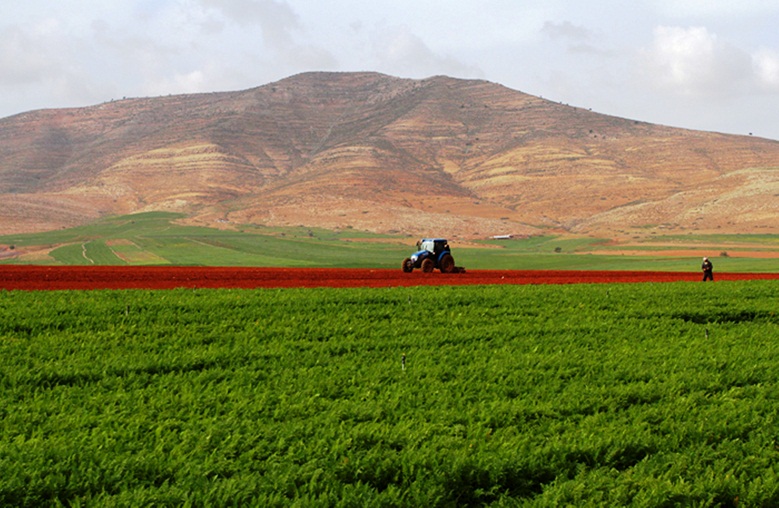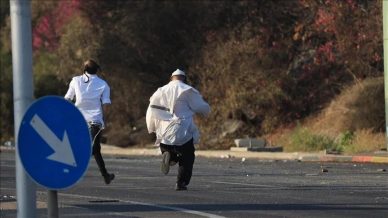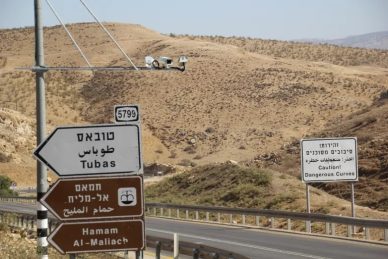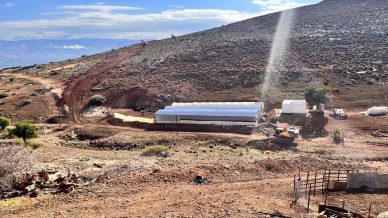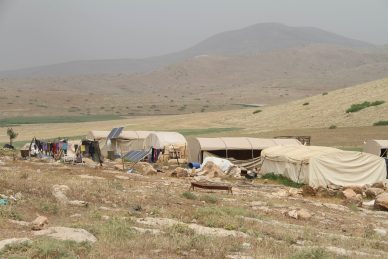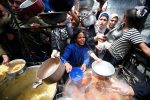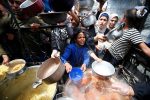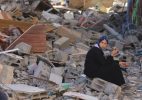Al-Baqi’a Plain in the northern Jordan Valley has always been targeted by Israel’s settlement plans since it has the most fertile agricultural lands in the occupied West Bank.
Al-Baqi’a covers an area of about 100000 dunums of land and extends to the Palestinian-Jordanian border. Many Palestinian residential communities are located there with sheep herding and agriculture as their main sources of livelihood.
Settlement and Judaization
Israel’s settlement activity in Al-Baqi’a started in 1972 when Bik’at and Argaman settlements were built. Later in 1978 Hamra settlement joined them.
Israeli settlers did not only build settlements on lands owned by Palestinian citizens but they also confiscated hundreds of dunums of land that were designated for sheep herding and agriculture and annexed them to their settlements under the pretext that they were military zones.
Targeting farmlands
Later the lands permitted for grazing shrank from 20000 dunums to 5000 dunums only. This is added to another 5000 dunums seized for “military purposes” in Al-Baqi’a.
The sectors of agriculture and animal husbandry suffered catastrophic losses as a result of the repressive measures pursued by Israeli soldiers and settlers against Palestinian shepherds and livestock breeders in Al-Baqi’a.
These measures included land confiscation assaults and home and barn demolitions. A large number of farmers shepherds and breeders were forced to leave the area and even abandon their jobs.
Displacement
In 2000 Al-Baqi’a was hit by a new catastrophe. Israeli occupation forces dug a trench that was 2 km long 4 m wide and 4 m deep isolating about 40000 dunums of Palestinian agricultural land. This pushed hundreds of herders to leave the area with their livestock after they were left helpless with nothing in hand to do.
In a similar operation Israeli occupation forces dug another trench in 2011 with a length of 5 km and a depth of 2 m to the southeast of Khirbet Atouf. This step further entrenched the Israeli presence in the area and completely isolated the Bedouin communities of Al-Baqi’a from each other.
Israel adopted a gradual displacement policy against the Palestinian residents of Al-Baqi’a by arbitrarily and repeatedly demolishing their simple houses seizing their property assaulting them in their own fields destroying their crops and restricting their movement.
Oslo Accords
Based on the Oslo Accords 25% of Al-Baqi’a’s area is classified as (A) and (B) while the rest is classified as (C) which is exclusively controlled by Israel which spares no effort to completely erase any Palestinian presence there.
Al-Baqi’a’s Palestinian farmers complain that they have limited access to water resources. That’s why they resort to planting crops that mainly depend on rainwater and this explains the gradual decline in production.

